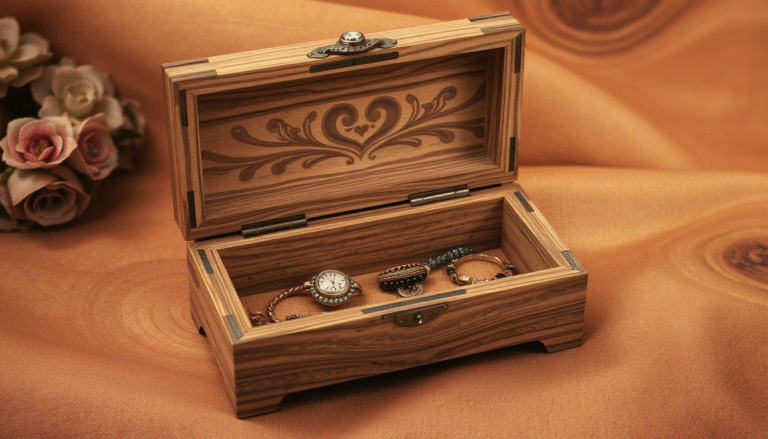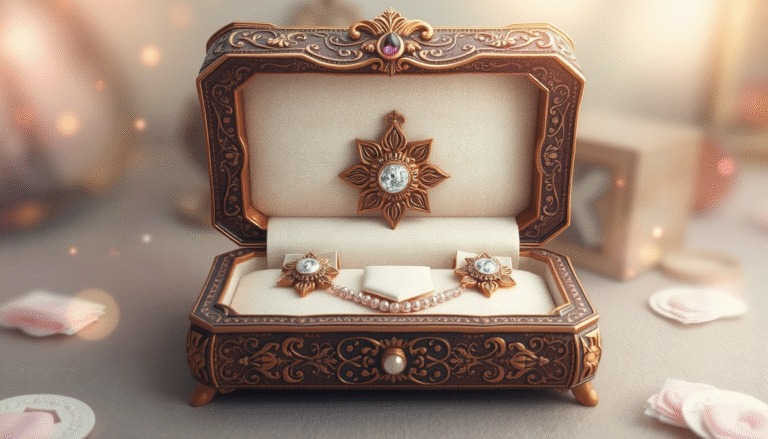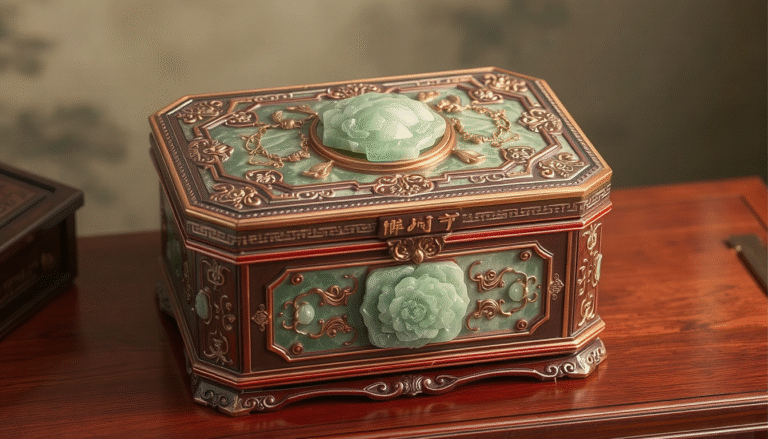Introduction: Unlocking the Story Behind Your Silver Box
Perhaps it was handed down to you by a grandparent, or found in a local antique shop. There’s also the perfect amount of heft, the swirling ornamentation of its design and perhaps a faded velvet lining that suggests treasures once held within. This unique combination of features is what makes International Silver Company jewelry boxes unique.
The stories these boxes tell are stories about America’s past. And many of the people who own them have similar questions: Where did my box come from? What material is it made of? How much is it really worth?
We created this guide to answer all your questions in one place. By the time you finish reading, you’ll know enough about your item’s history, identification, value, and care to feel like an expert. Think of this as your key to understanding the treasure you hold.
From Silver City to a Global Legacy: The History of the International Silver Company

The beginning of studying your jewelry box is knowing who made it. The International’s Silver Company wasn’t a single company but a group of companies, incorporated as the International Silver Company in Meriden in 1898.
This new company united a large number of independent silversmiths of Connecticut. A city in this state, Meriden, was known as “Silver City USA” for its production of the nation’s silver-plated goods. The city had earned the nickname fair and square.
The intent of the merger was to dictate how silver goods were produced, make designs uniform and rule the market. For many years it worked, and International Silver Company became one of the world’s largest makers of silver products. Most of the original company names survived as independent brands beneath the corporate umbrella.
Key subsidiaries that formed the International Silver Company include:
-
Meriden Britannia Company
-
Rogers Bros. (including various versions like Wm. Rogers & Son, Rogers & Bro.)
-
Wilcox Silver Plate Co.
-
Derby Silver Company
-
Forbes Silver Co.
Although the company diversified and ceased making silver in the late 20th century, its craft remains cherished. Millions of sets of flatware and serving dishes and of jewelry boxes survive to testify to the quality of their product.
The Collector’s Guide: How to Identify Your International Silver Company Jewelry Box
Figuring out what box you actually have is the first step in finding out a box’s story and what it might be worth. Study its marks, material and design style — those are clues trailblazed by the craftspeople that created it.
Decoding the Maker’s Marks
The surest proof is the maker’s mark, which by far tends to be located on the underside of the box. Flip it over gently and search for stamped or engraved words and symbols.
You’ll typically see “International Silver Company” or “I. S. Co.” stamped there. You’ll occasionally find one of its subsidiary brand names as well, which can help date the piece and figure out where it fit in the company’s history.
| Mark/Symbol | What It Means | Time Period/Notes |
| International Silver Company | The item was produced under the main corporate brand. | Most common mark, seen throughout the 20th century. |
| I. S. Co. | An abbreviation for International Silver Company. | Often used alongside other marks or on smaller items. |
| Rogers & Bro, Wm. Rogers, etc. | A mark of one of the famous Rogers subsidiaries known for quality silverplate. | Pre-dates 1898, but continued as a brand line by ISC. |
| Meriden Britannia Co. | A mark of one of the founding and most prestigious companies in the merger. | Indicates a connection to the high-quality Meriden tradition. |
| Wilcox S. P. Co. | Stands for Wilcox Silver Plate Co., another original member. | Often seen with “International S. Co.” on the same piece. |
| (British Crest Symbol) | Not a maker’s mark, but a popular design motif. See “Common Styles” below. | Does not indicate British origin; it was an American design choice. |
Silverplate vs. Sterling: What’s Your Box Made Of?
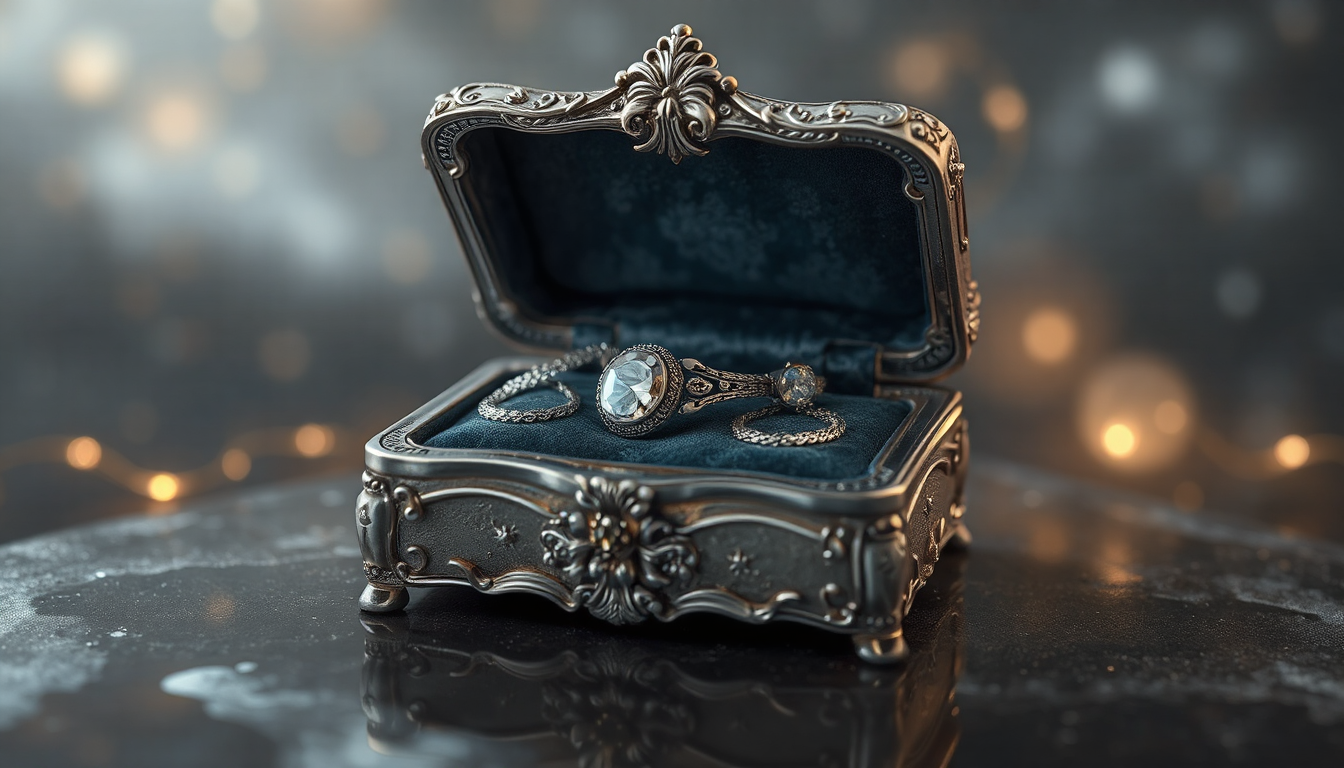
This difference matters a lot. Most International Silver Company jewelry boxes are silver-plated, not sterling silver.
Silverplate is when the box is made of a less expensive metal, say brass or copper, with a very thin layer of real silver on top. It’s different with sterling silver (it’s 92.5% pure silver mixed with other metals).
If your box was sterling, it would have to be labeled “STERLING” or “925.” If you can’t find these marks, your box is probably silver-plated. It affects how much its worth, and how you should keep it clean.
Reading the Design Language
International Silver Co. manufactured boxes that fit the fashionable designs of their period. But by knowing these styles, you can often tell when your box was made.
Baroque & Rococo Revival (Early 1900s – 1930s): These are the most common styles you’ll see. Look for heavy floral designs, raised patterns, curling leaf designs, and scrolls. Many have lion head & paw feet or other fancy feet, copying European antiques.
Art Nouveau (circa 1890-1915): More rare and valuable. These lines are relaxed, organic. Look for wavelike lines, stylized flowers such as lilies and poppies, and sometimes lithesome female figures with long, flowing hair.
Art Deco (circa 1920-1940): This style uses clean lines and geometric shapes. Features include strong geometric patterns, stepped designs, and angular flower designs. These boxes look more streamlined and less busy than earlier styles.
More Than a Box: Common Styles and Designs to Know
Although the patterns differed, a few popular styles were manufactured in great quantities and are encountered by collectors today. Identifying what kind of classic your box is, however, helps to give context about where it fits in the company’s history.
-
The Ornate Footed Casket: This is the classic style. These rectangular boxes stand on four decorative feet. The feet are important—they might be simple scroll feet, fancy paw feet, or even detailed lion head feet. The box and lid usually have deep, raised flower or scroll patterns.
-
The British Royal Crest Box: Perhaps the most famous design. These boxes have a prominent crest on the lid, based on the Royal Coat of Arms of the United Kingdom. Look for a shield with a lion and a unicorn on either side. Below it, you might find the French motto “Dieu et mon droit” (“God and my right”). This design was very popular because it looked fancy and old-world.
-
The Art Nouveau & Floral Boxes: These celebrate nature with a flowing style. Instead of heavy scrolls, you’ll see elegant vines, graceful flower stems (like lilies or irises), and sometimes butterflies. They often look more feminine and less imposing than the footed caskets.
-
Heart-Shaped & Themed Trinket Boxes: International Silver also made many smaller boxes for just a few special items. Heart-shaped boxes were always popular and often given as romantic gifts. Other themed boxes might have specific designs for special occasions.
What Is It Worth? A Practical Guide to Valuing Your Jewelry Box
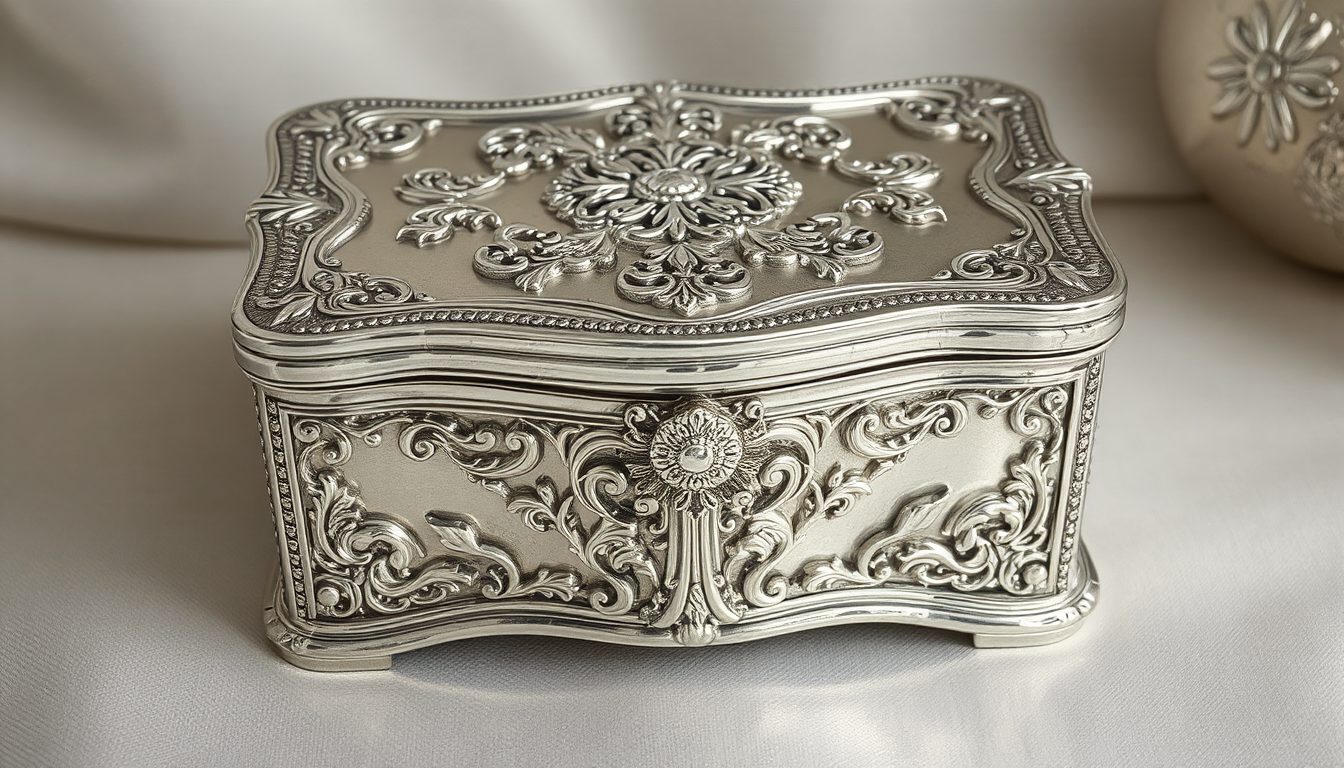
Most people want to know about value. While these silver-plated boxes rarely worth thousands, collectors still value them. The price depends on several factors, not just age. We won’t give specific prices since the market changes, but we’ll show you how to find a realistic value yourself.
The Key Factors Influencing Value
Use the table above to evaluate your box. The more “High Value” characteristics in a box the more health a box will be “worth”.
| Factor | High Value Indicators | Low Value Indicators |
| Condition | Original velvet/silk lining is intact, clean, and not torn. Hinges are strong. No dents or significant scratches. Silver plating is mostly present with minimal brassing (wear-through). | Lining is missing, badly stained, torn, or has a musty odor. Hinge is broken or loose. Major dents, deep scratches, or corrosion. Significant loss of silver plating revealing the base metal. |
| Material | Exceptionally rare solid sterling silver (clearly marked “STERLING”). | Common silverplate. |
| Rarity & Design | Unusual, complex designs (e.g., Art Nouveau figures, highly detailed scenes). Large, oversized models. Signed by a desirable subsidiary like Meriden Britannia. | Very common floral or crest designs produced in high numbers. |
| Size & Presence | Large, heavy “casket” style boxes with elaborate feet. | Small, simple trinket boxes. |
How to Research Comparables
The only real way to know what the market says that the price is, is by looking to see what people are actually paying for similar items.
-
Check Condition First:Have a long hard look at your box using the table above. A mint box has a higher value than a damaged box.
-
Identify Marks & Style:Look for the maker’s mark and significant design elements (“lion feet,” “crest lid,” “heart shape”).
-
Search Sold Listings: Go to eBay or Etsy and search for “International Silver jewelry box” plus your key features. Crucially, use the filter to show “Sold Items” or “Sold Listings.” This shows what buyers actually paid, not what sellers hope to get. Compare your box to 5-10 recent sales of similar condition items to get an accurate value range.
Preserving Beauty: How to Clean and Care for Your Silver Jewelry Box
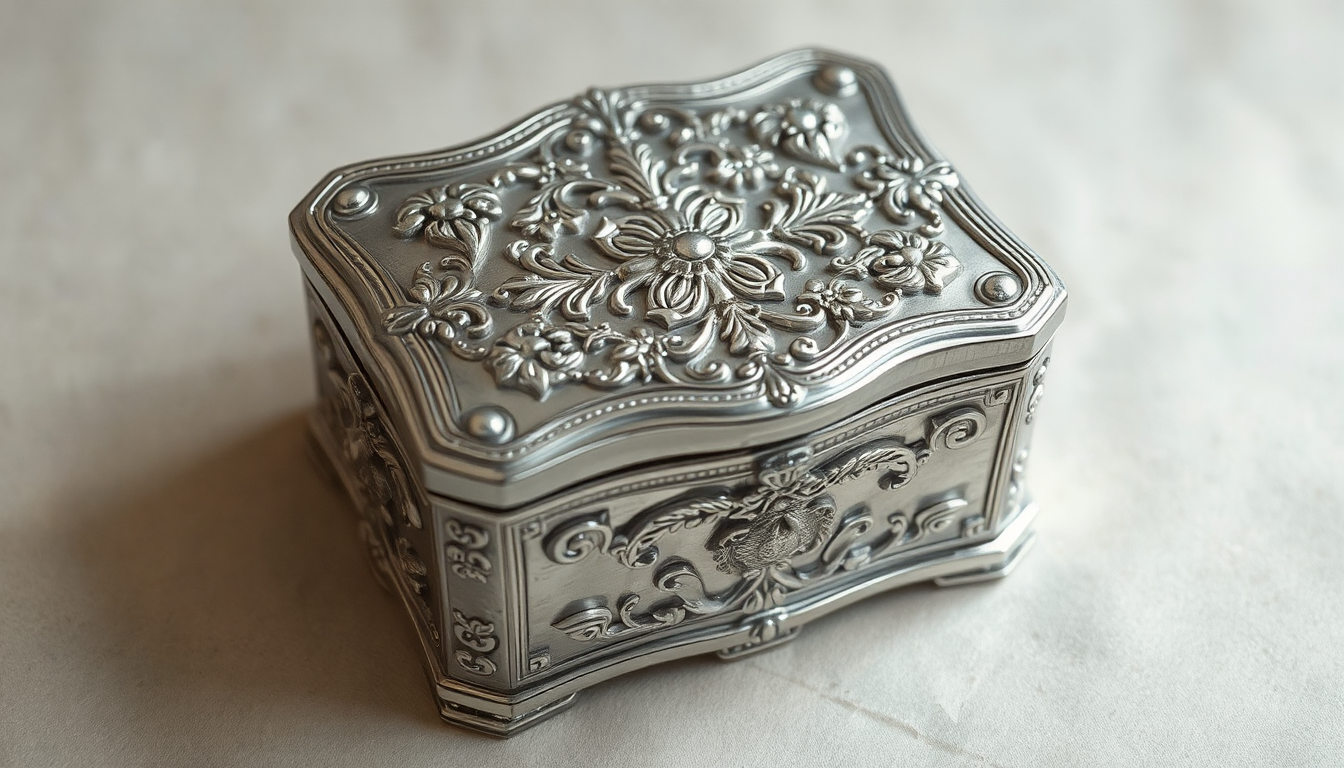
Good cleaning can make your box look far better, but bad cleaning can damage it permanently. Given that these boxes are silver-plated, the silver layer is shallow and possibly can be worn off by heavy scrubbing. Gentle care is very important.
What You’ll Need (The Gentle Cleaning Kit):
-
A good, soft silver polish (preferably a cream or lotion).
-
Soft, clean cloths (microfiber or an old cotton t-shirt).
-
A gentle toothbrush for such corners and edges.
-
Cotton swabs.
Step-by-Step Cleaning Process:
-
Start Dry: First, go over the whole box with a dry, clean cloth to get rid of dust and dirt.
-
Apply Polish to Cloth: Never allow polish to set directly on box. Dab a bit on your cloth.
-
Polish Gently:Use gentle circular movements to tackle small sections at a time. “A warm glow of silver will appear behind the tarnish. This process is very satisfying.
-
Detail Work: For intricate patterns or around the feet, use a soft toothbrush with a tiny bit of polish. Be very careful around detailed engravings. Cotton swabs work well for tight corners.
-
Buff to a Shine: Use a clean cloth to buff the entire piece to remove any remaining polish and to highlight that shine.
Caring for the Velvet Lining:
The inner side may be just as fragile as the silver. Go over them with a light touch and remove any dust with a soft-brush attachment on a handheld vacuum cleaner. For small stains, apply a slightly dampened cloth with water and blot gently. Avoid getting the lining wet.
| Do’s | Don’ts |
| Do use a high-quality cream polish. | Don’t use abrasive powders, “silver dips,” or toothpaste. |
| Do use soft cloths. | Don’t use rough paper towels or abrasive pads. |
| Do polish gently and patiently. | Don’t scrub hard, especially on worn areas. |
| Do store in a dry place to slow future tarnish. | Don’t try to machine wash or put it in a dishwasher. |
Conclusion: A Timeless Piece of History in Your Hands
An International Silver Company jewelry box is far more than a place to keep valuables. It has its roots in the golden age of American silver production, itself founded on master designers and industrial pioneers. Every box has a tale to tell, of style, craftsmanship and even the personal stories of the people who have owned them.
By learning about its marks, admiring its design, and taking good care of it, you are more than an owner, you are a steward of a small, if not-so-humble, portion of history.
We hope that is legacy you have now come to appreciate. Cherish it, keep it alive, let the story live on.
FAQ
-
How can I tell if my International Silver Company jewelry box is sterling or silver-plated?
If your box is stamped “STERLING” or “925,” it’s sterling silver. If not, it is probably silver-plated, which is typical of International Silver Company jewelry boxes. -
What are the most valuable International Silver Company jewelry box styles?
Lion head feet, art nouveau designs and an can all in one box, rare sterling silver box are some of the higher priced box styles in the collector’s market in 2025. -
How old is my International Silver Company jewelry box?
Look at the maker’s mark along with the design style – these jewelry cases were popular during baroque and rococo revival (1900s-1930s), Art Nouveau (1890-1915), and Art Deco (1920-1940). -
What’s the best way to clean my International Silver Company jewelry box without damaging it?
Apply non-abrasive silver cream polish on a soft cloth.Use soft cloth and gently work in a circular motion Out of not use such as detergents and chemicals as those can remove the plating and are harmful. -
What is the average value of an International Silver Company jewelry box in 2025?
Values will vary greatly depending on condition, size, design, rarity – look at eBay recently sold for similar pieces but nice examples can generally be found from 50-300.


